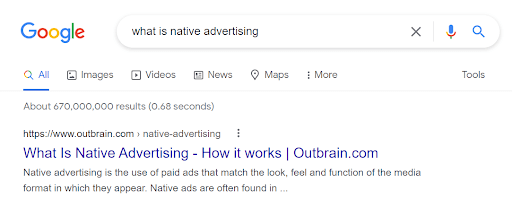
- Find out what questions your customers are asking and answer them.
- Think of a fresh, fun angle.
- Post your content beyond your blog.
- Always revisit your content and strategy.
- Use thought leadership for brand awareness.
- Build on what works.
If you’re a B2B marketer, and you want to stand out from your competitors, then you’re probably thinking a lot about thought leadership.
There’s a good reason for that. According to the annual Edelman-LinkedIn thought leadership study, over half of B2B decision makers in 2021 said they spend more than an hour a week reading thought leadership content, and 47% said that thought leadership helped them to discover a brand and lead them to purchase.
But here’s the flip side. Just over 70% said that more than half the thought leadership content they consume does not give them valuable insights, and 55% said that if the thought leadership doesn’t spark their interest within a few minutes, they simply move on.
If you read a little between the lines, there’s something important going on here: B2B professionals are hungry for great thought leadership, and when it’s good, it can be extremely impactful in helping them decide to purchase.
So your task is clear: thought leadership is the lifeblood of any sound content marketing strategy. But, the thoughts you’re leading with must address actual customer pain points, deliver value and insight, and be compelling and interesting. If that sounds like a lot, then keep reading for some tips about how to do thought leadership that works.
But first, let’s start with a clear discussion of what thought leadership actually is.
What is Thought Leadership?
Thought leadership is a method of content marketing that solidifies your position as an expert and authority within your industry. The goal of thought leadership marketing is not to create sales-heavy content, but to provide visibility to your business by branding yourself as an expert. There are still opportunities to highlight your product or service, but first and foremost you want to be viewed as knowledgeable, thoughtful, original, and even groundbreaking.
Getting there is a slow and steady process that requires planning and – yes – a lot of thought. Here are 6 tips to use when building a thought leadership marketing strategy:
1. What is your target audience thinking about at the moment?
The first thing you should do is identify the questions your audience and customers are asking – and build your thought leadership marketing strategy around the answers.
Consider how people are searching in your industry or niche, and which short and long-tail keywords your customers are using in search engines. Ask yourself the types of problems your product or service is designed to solve, and find the issues surrounding those problems. Then, you can create content that addresses those questions, pain points, and keywords.
For example, here at Outbrain, we help advertisers reach high-quality audiences on premium publisher websites via our native advertising network. Marketers and business owners who are searching for new channels and tactics for their online advertising strategy may be researching what is native advertising. By creating high-quality thought leadership content around native advertising, Outbrain managed to grab the top position on Google search results, and earn great authority among target audiences.

There are loads of sites and tools to help you research what questions are being asked by your target audience, like Semrush, AlsoAsked, AnswerThePublic, Ahrefs, Quora, Reddit, Google Keyword Planner, UberSuggest, and even your Google Analytics search results. The best of all? Ask your customers.
2. Think of a fresh, fun angle
The toughest thing about creating thought leadership, or any other content for that matter, is being original and interesting. There is a massive overload of information and opinions online, and it is all too easy to get lost in the haystack. Even worse, 30% of decision makers say that thought leadership is mediocre to very poor! That’s a category you definitely don’t want to fall into.
People are emotional and intellectual creatures, so striking the right balance is really important. According to 87% of B2B buyers (your target audience!), thought leadership can be ‘intellectually rigorous AND fun’. While every topic in your niche probably has already been or is currently being discussed, that doesn’t mean you can’t bring something fresh to the table. Every person is unique and so are you – find your authentic take on the subject and put it out there. Make it as fun, moving, interesting and original as you are.
3. Post your thought leadership content beyond your blog
Your company blog should always be the hub of your audience-building efforts, but it’s critical to reach wider audiences by posting your thought leadership content on other platforms. Social media networks such as LinkedIn, sites like Medium, and industry forums are all great ways to reach the early-adopter crowd. Guest blogging is another effective way to discover a relevant audience interested in your thought-leading commentary, as well as building authority in your niche by having your name and brand associated with other industry leaders.
4. Revisit your content and strategy often
When your thought leadership marketing strategy is built on a foundation of customer questions and pain points, then it makes sense to revisit those questions all the time.
Keeping a finger on the pulse of what’s going in your industry and among competitors is also essential. Google Trends is a great way to stay ahead of the curve. Look in a more broader way at other aspects of current events and trends that may impact your business and customers. For example, the supply chain crisis is not only relevant for brands that trade in physical products. Shipping delays are a concern for the world at large, even for digital-first companies. As industry trends change, you develop new products and services, and general business trends evolve – your answers to old and new questions need to evolve as well.
5. Use thought leadership as part of your brand awareness efforts
Thought leadership can have several goals, such as building authority or boosting one’s professional profile. Another important goal of thought leadership is brand awareness, increasing the viability and image of your brand, and creating an entry point for new audiences and customers. You can do this through your writing style, the uniqueness of your viewpoint, the creativity in your videos and images, and by demonstrating how well you understand the wants and needs of your B2B clients. When creating new content, ensure that it supports how you want to be identified as a brand, especially since this may be an online reader’s first experience with you.
6. Find out what works, and build on it
So your competitor’s thought leadership has already touched a nerve and is gaining traction. It’s getting shares and likes and links and comments. When it comes to thought leadership, being original is important. But you know the old saying, “there is nothing new under the sun.” Sometimes, leveraging thought leadership content that already works, and building on it bigger and better, is a very smart strategy. It’s even been coined The Skyscraper Technique, and it’s a popular tactic among link builders. But you can use it for more than link building; it’s great for authority building, reputation building, and leadership building too.
BuzzSumo is a great tool for finding out what content in your niche is already popular across various platforms and networks. You can even filter by author name, so you can check out how a particular thought leader is faring in the marketplace of ideas. Once you’ve identified a hot button issue or article, consider what kind of fresh, fun, and original angle you can bring to the table, and work on creating thought leadership that can build on the already popular discussion.
What have we learned about thought leadership marketing?
In the B2B world, thought leadership and personal branding are an essential part of an overall marketing strategy. By publicizing your original ideas, opinions, predictions, and analyses about things that are important to the players in your niche, you’ll build authority, credibility, and trust around your professional name. And by associating your brand with the authority you’ve built, you’ll get more visibility, interest, and engagement for your business.
Thought leadership begins and ends with fresh, original content, and that starts with you. To cultivate thought leadership, you need to cultivate your thoughts! That’s the true place from which thought leadership success will grow.